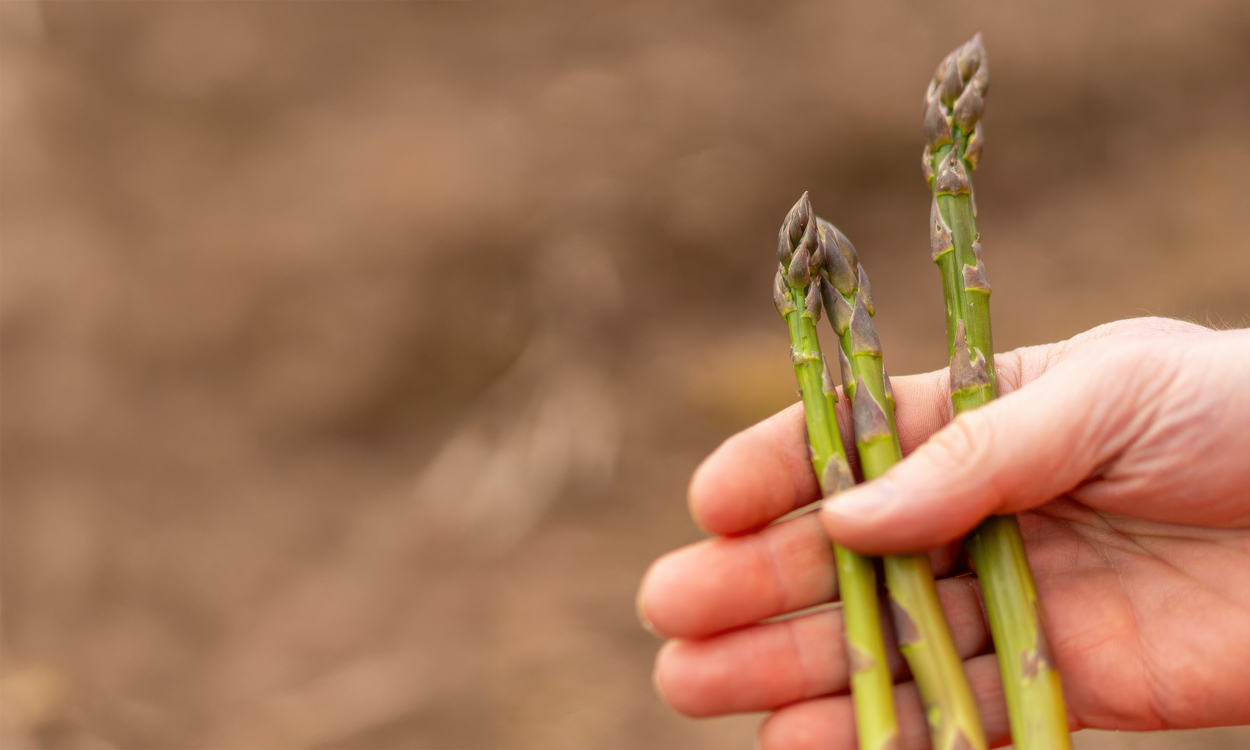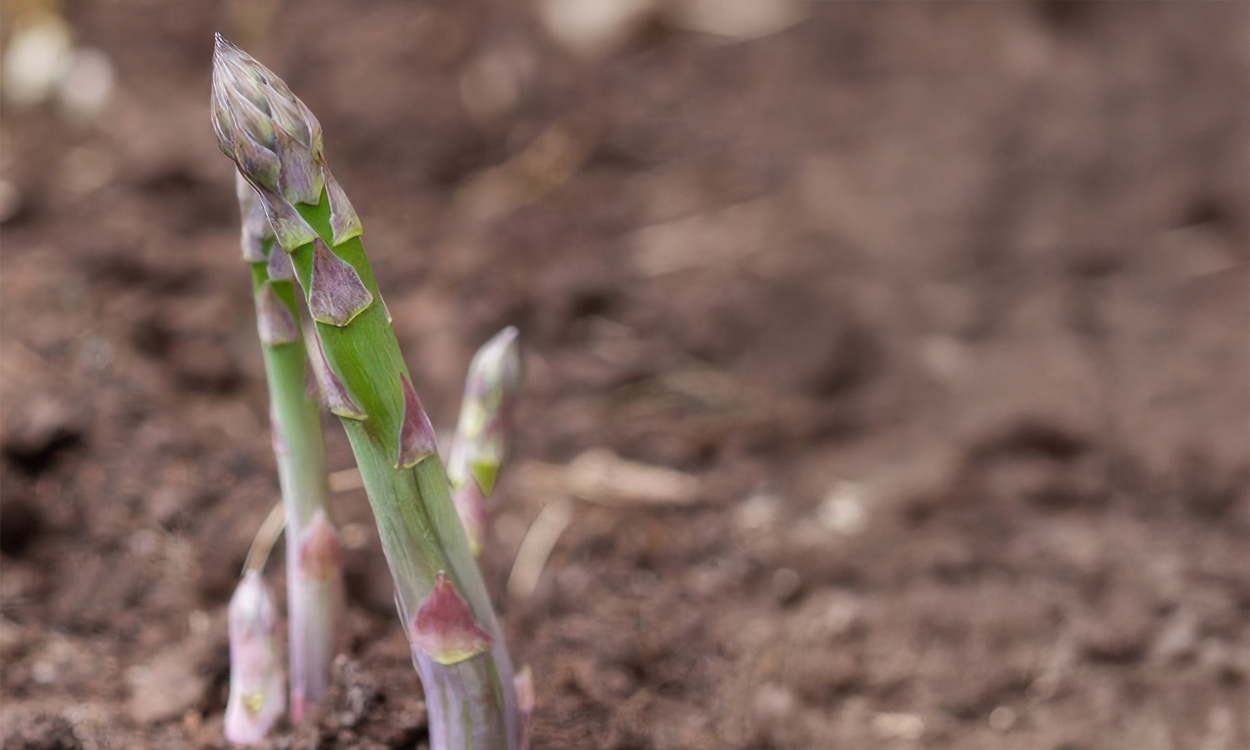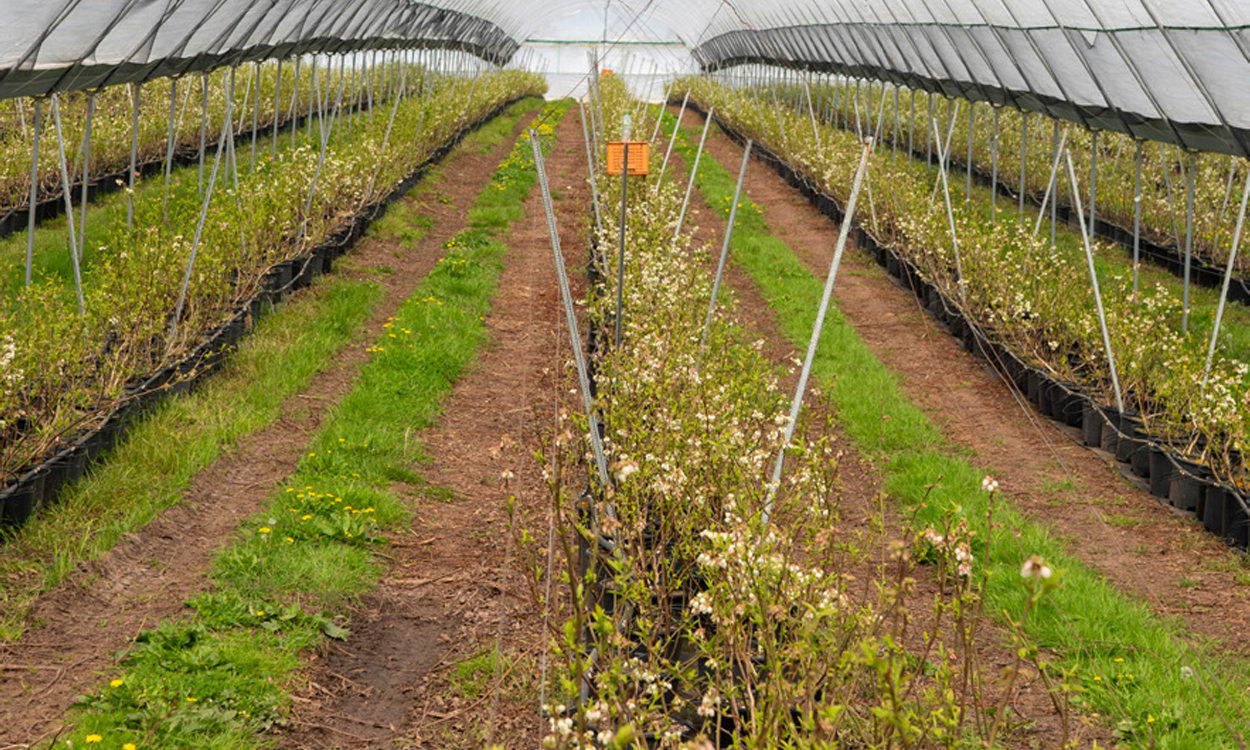Coming up to St George’s Day in the Wye Valley, Herefordshire, fields of asparagus await the 23rd April – the official start date of the growing season. “It’s a unique crop, a very unusual vegetable,” says Chris Chinn at Cobrey Farms, which his family founded four generations back. “We’ve been here a century now, since 1924,” he says, while his brother Henry drives by on the same vintage Ford tractor that he first learned to drive on. “We still need to work out how we’re going to celebrate.” Chris walks us along the bushy green borders where green asparagus spears have been allowed to grow out into their full natural fernlike selves. He explains how each one begins in hidden networks of root mass and bud clusters, buried about six centimetres below the soil. The tips start to emerge at this time of year, “as the first spring warmth gets to them”. Seven to ten of those will soon be harvested from every plant, leaving roughly the same number behind, before the cutting then stops quite abruptly on midsummer’s day, 21st June. “We can’t just keep harvesting all summer,” says Chris. “We need to leave plenty in the ground to keep charging the root system over the winter, so that’s why we’ve got such a short season. When it’s gone it’s gone.”

The green asparagus, he says, is the type “we know and love”, and he’s so primed for the coming crop as to manifest a kind of farmer’s pride overlooking the field. “Exciting isn’t it? A real seasonal treat.” White asparagus, meanwhile, never gets the sun and so never loses its subterranean pallor. The purple kind is purpose-bred for its pretty colour, tender texture and sweeter flavour. “It’s so good for salads,” says Chris. Both varieties have even shorter growing seasons than classic green, but the Chinn family business, Wye Valley Produce, has become “quite well known” for all three, as Chris puts it – a modest way of saying they’re renowned, in fact, for their quality and consistency – despite only producing them since 2004. In previous decades, much of their land was given over to growing new potatoes, but the farm suffered a large fire in 2002. “Out of the ashes emerged this idea for a new crop. South Herefordshire is a big area for soft fruit-growing, but we didn’t want to be the same as everyone else. Asparagus seemed to need some development, having been grown at small scale, in the same traditional manner, for 50 or 100 years.”

“Our position is really fortunate in that we get the prevailing South-Westerly winds and the mid-Atlantic current, which bring heat from the Caribbean and carry lots of rain, some of which is dropped on Wales before it reaches us. All of which makes our winters not too cold and our spring relatively warm, while the local topography is useful in angling our fields into the sun on the southfacing slopes, and away from the sun on the north-facing slopes.” Exploiting those angles with judiciously placed polythene tunnels can help extend the season a little at either end. The Chinns of Cobrey Farms duly supply the asparagus that has become a kind of icon of English agriculture, with every shipment a delivery on that Mudwalls Fresh Produce promise. And when it comes to the age-old question of whether to bend or snap the spears first, Chris Chinn thinks it’s best to simply trim off the whiter sections, as they’re likely to be toughest. All asparagus can be eaten raw, he reminds us, and cooking only softens it up. Nutritious as it is, he says that he eats “an unhealthy amount of asparagus”, working so close to home that he’ll often fry some up for his lunchtime bap. “Sometimes it’s just easier to boil it, as I quite often do myself, but to get more flavour you can grill it, barbecue it, braise it. Or just get a tray, bake it off, perhaps a bit of parmesan on top, and have it as a starter or a sharing dish. You can’t do that with many other veg.”
Written by Tiffany Eslick & Stephen Phelan; Photography by Camilla Hylleberg

